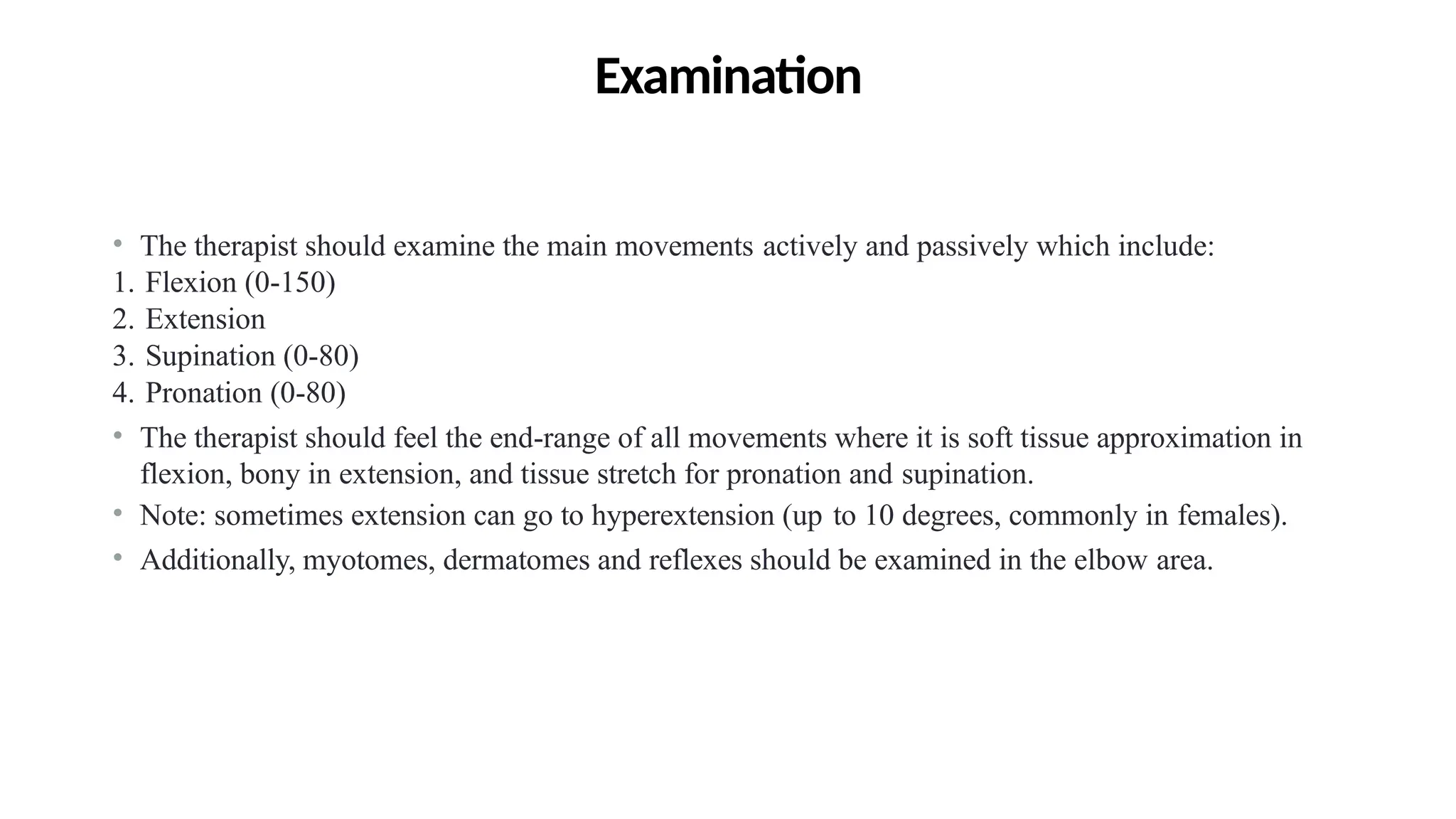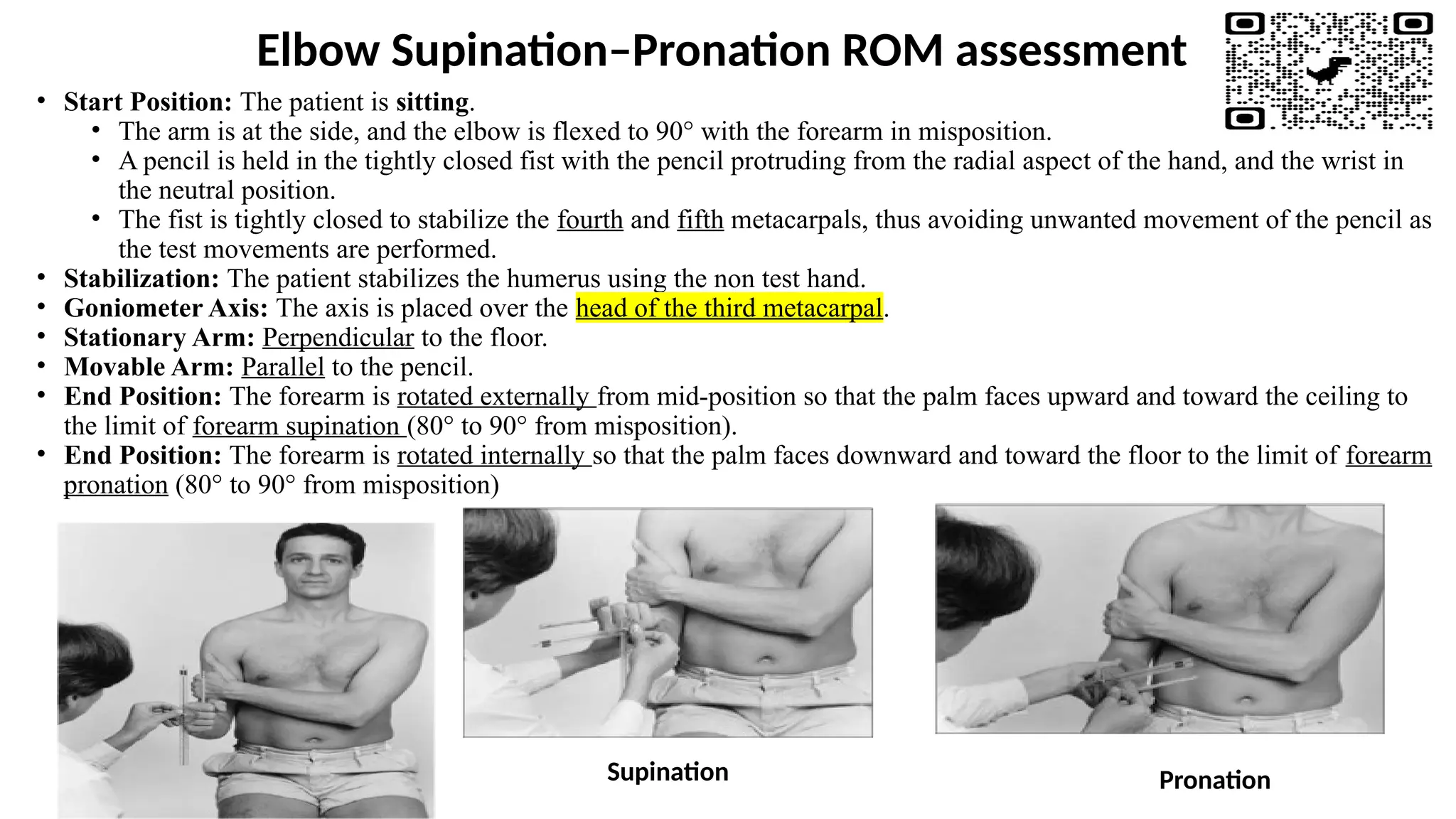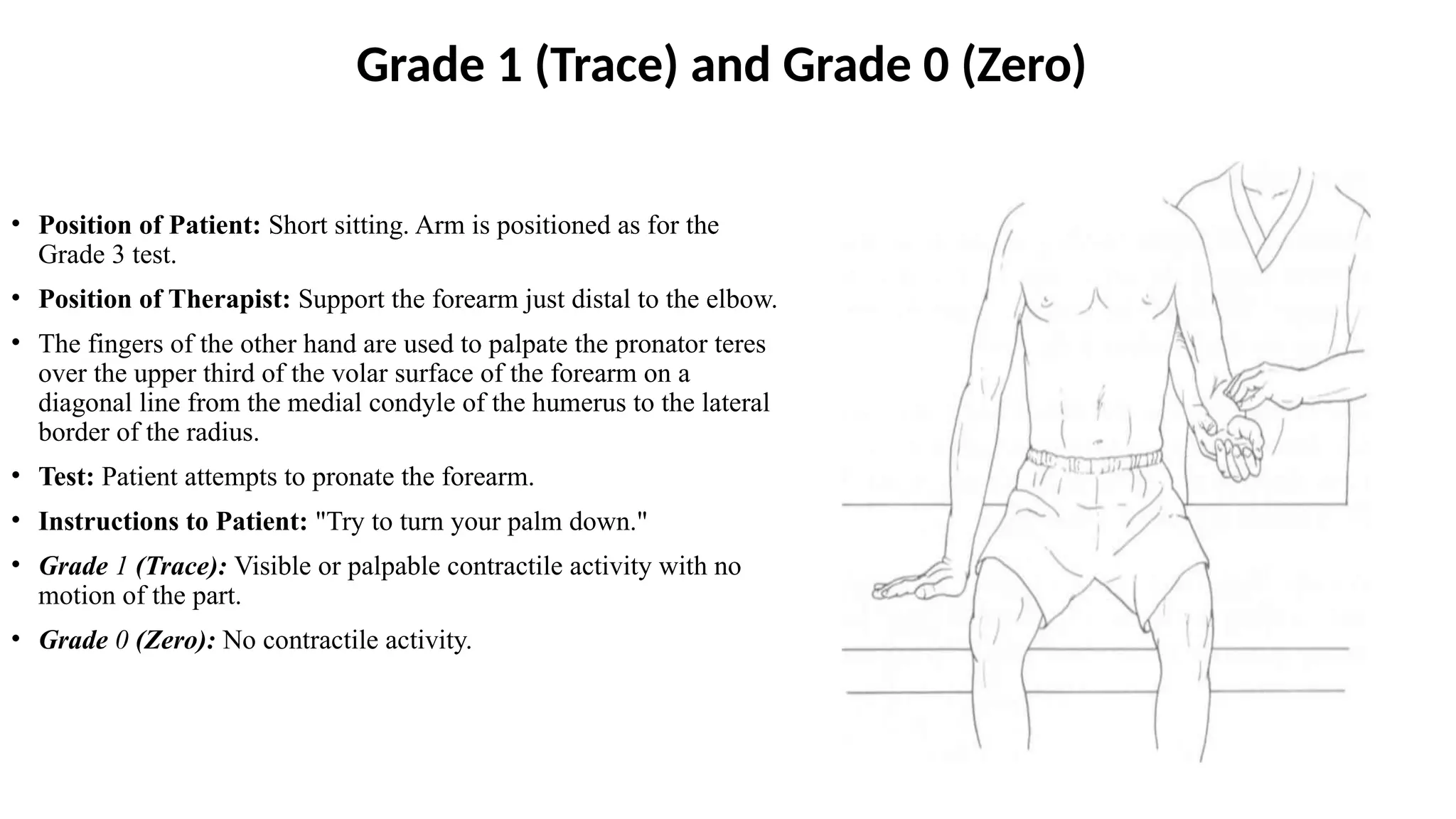The document provides a detailed overview of elbow joint anatomy, assessment methods, and rehabilitation techniques in the context of physical therapy at Jordan University of Science and Technology. Key topics include the joint's structure, patient history inquiries, observational techniques, palpation points, range of motion (ROM) assessment, and muscle testing for various elbow flexion and extension grades. The guidelines aim to enhance the understanding of elbow functionality and inform rehabilitation strategies for related injuries.

































